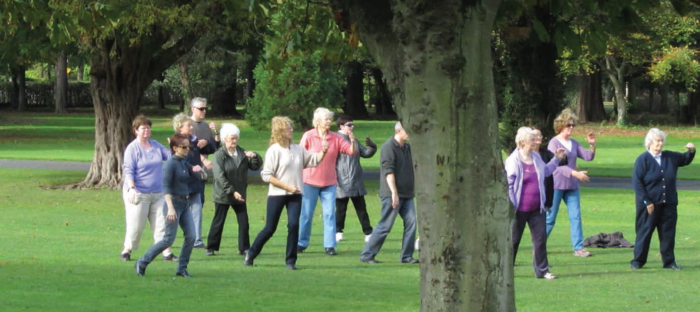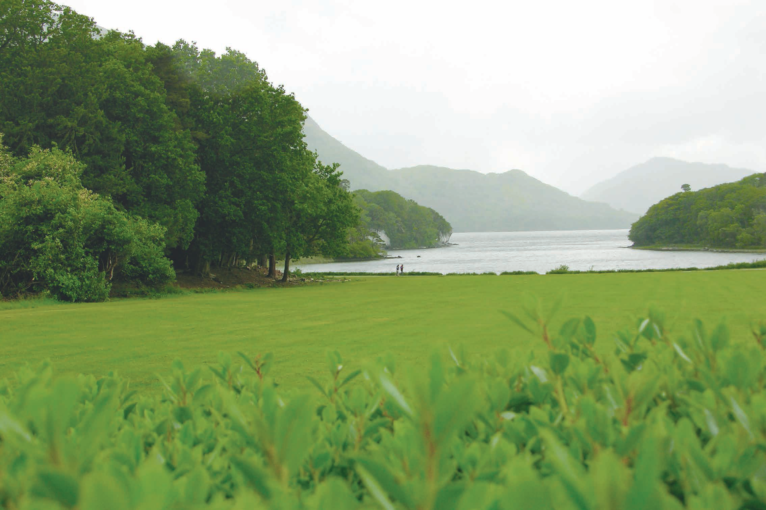Tony Williams, President of the Irish Landscape Institute, outlines how challenges and opportunities facing his profession may impact upon the horticulture sector and our nation as a whole.
This article is the product of discussions with colleagues and friends, and from the perspective of a human being, temporarily occupying a small piece of a landscape on a fragile planet. The issues outlined below are of critical importance, not only to the profession of landscape architecture but to all those involved at the interface of the human species and the rest of the planet.
MORE THAN SIMPLY THE STUFF OUTSIDE…
The word ‘landscape’ is popularly understood as referring to all outdoor space, but of course, it may also refer to the interiors of building and structures. While my profession is generally focused on the outdoor landscape, it may also be directed at interior spaces and with the design and construction of the interior landscape.
It is expected that by 2030, over five billion people will live in urban spaces. That’s a lot of people and a lot of infrastructures, all of which will need to be mediated with the planting of some form. Coupled with this, emerging data on the positive impact plant material has on workplace productivity, psychological wellbeing and sick building syndrome and we have a huge challenge ahead of us. But the adaptation of our plant palettes and related knowledge and skills will afford us a massive opportunity – one we can all benefit from.
IT TAKES MANY HANDS TO MAKE QUALITY SPACE…
Provision of a public place and ‘place making’ is a primary task of landscape architects in tandem with our colleagues in the planning, engineering, architectural and horticultural professions. Indeed, the provision of public space also draws on many principles of psychology and sociology so can be truly termed multidisciplinary.
“It is expected that by 2030, that over five billion people will live in urban spaces”
In addition to being multidisciplinary, public space also covers the design, construction and maintenance of a wide diversity of contexts and scenarios including;
● Urban building (and rural villages, the crossroad, the built environment in general)
● Traffic corridors, the roads, railway, footpaths
● The social environment of the street, the home and place of work
● The planted or soft landscape environment
While we are all responsible for public space and place making, it is of particular importance and relevance to landscape architects.
Public spaces include both streets and urban hard landscape environments and also urban and rural parks. In addition, the countryside or suburban areas have many natural or man-made green spaces such as along river or transport corridors which, with some attention from our disciplines, may be enhanced. The presence and enhancement of such greenspaces is a primary function and benefits from the collaboration of landscape architects and horticulturists in the main.
We have yet to achieve it, but there is massive potential in drawing the various strands of the landscape sector together to deliver healthy, sustainable and environmentally supportive spaces. It will benefit us all.

IRELAND’S NATIONAL LANDSCAPE STRATEGY… OR LACK OF IT
The publication of the European Landscape Convention (ELC) and its ratification by Ireland in 2004 was welcome. However, one of the requirements of the ELC was the development and adoption of a National Landscape Strategy (NLS). The development of this is a key aim of the Irish Landscape Institute (ILI) and we have been working with Government Departments to assist its development. The lack of such an NLS results in the absence of a framework within which infrastructure such as the proposed Eirgrid network, potential wind farms and other major infrastructural projects can be planned. Landscapes, and particularly the sensitive rural and urban landscapes, will receive little protection without a coherent and robust NLS. We would hope that the publication and enactment of the NLS are imminent. Where landscape impacts are expected and unavoidable from such major infrastructure projects, perhaps the combination of good design and mitigation strategies including soft landscape may offer a partial solution.
The development of the NLS would undoubtedly result in a better understanding of the value and quality of our landscape. One of the challenges will, of course, be the adoption of the NLS by both the myriad of government departments and agencies and the population in general. The NLS and the structures and legislation required to support it would assist the protection and sympathetic development of our landscape, thus presenting new opportunities for the landscape profession.
PLANTING SCHEMES IN RESPONSE TO CHANGING CLIMATE
Climate change is an issue which is increasing to the fore due to the profound effects of the growth of industrialisation and its effects which in turn are exacerbated by rising population. The responses and solutions to climate change require a political dimension but also short and long term technical solutions.
One of the effects of climate change is the apparent increase in extreme weather events, both in terms of extended dry periods (in the east of the country) and more frequent and damaging floods and storms.
Our maintenance regimes will have to adapt to reflect these changed circumstances. This will require us to revise our maintenance strategies including the use of irrigation systems which may be somewhat unexpected for our maritime climate (we do tend to consider it a rainy country). In tandem with more appropriate development and planning, we have an increased need to provide innovative flood attenuation schemes along rivers with the development of tidal and coastal schemes being required to prevent erosion and to ‘control’ expected flood events. Many of these innovative solutions rely on natural systems in order to be both low cost and sustainable, for example, the use of willow and alder to reinforce river banks and the planting or hydroseeding of slopes in order to stabilise. The combination of landscape architectural design and horticulture has of course been a key element in landscape construction for many years, but this is becoming increasingly important with the increase in awareness and promotion of green infrastructure.
THE NEED FOR QUALITY GREEN INFRASTRUCTURE
In 2013, both the European Union and the Irish government have published stated goals to develop international and national strategies for green infrastructure. These will direct attention to the multiple functions of green space; aesthetic, economic, cultural, environmental, sociological, historical and educational, to name but a few. The cultural dimension to plants and planting schemes, providing necessary inputs to the biosphere such as pollination and urban crops, treatment of pollutants by plants, repairing and enhancing biodiversity and ensuring habitat connectivity. The ILI held an international conference in 2012 on the theme of green infrastructure and the strong interest from delegates across different sectors showed the importance for landscape architects and managers of taking stock of the undervalued resources of green space in Ireland. We intend to hold a similar event in the near future which will be announced on our website in due course. Research into the principles of green infrastructure is ongoing and the use of the principles in projects could generate increased resources for investment in green space provision. All of these forecasts a need for the landscape sector to capitalise on this investment and produce sustainable designs and an available source of plant material.
THE REGULATION OF OUR PROFESSION
Landscape architects are currently not regulated by the state and it is the sole responsibility of the Irish Landscape Institute to do so. We maintain a register of fully qualified landscape architects who are trained in accordance with the principles established by the International Federation of Landscape Architects. It is also incumbent on our colleagues in associated professions to acknowledge this. Though some practitioners currently use the title, we would urge the profession and the public, in general, to ensure to employ fully qualified landscape architects on their projects. You will find our membership list on our website.
THE SAME SUSTAINABLE HYMN SHEET…
The above challenges and opportunities represent only some of those facing our profession (and our planet) and were chosen primarily to demonstrate the benefits of the collaboration of design and horticulture. Landscape architecture is much more than just using plants and horticulture but these elements and the botanical components are crucial to the success of both our built and natural landscapes. ✽
 TONY WILLIAMS MLArch. MILI is current President of the Irish Landscape Institute and Vice President (Education) of the International Federation of Landscape Architects in Europe. He is the Principal Landscape Architect with the Railway Procurement Agency and is involved in the design and delivery of infrastructural projects. TONY WILLIAMS MLArch. MILI is current President of the Irish Landscape Institute and Vice President (Education) of the International Federation of Landscape Architects in Europe. He is the Principal Landscape Architect with the Railway Procurement Agency and is involved in the design and delivery of infrastructural projects.
For more information on the ILI and its members, visit www.irishlandscapeinstitute.com. For information on IFLA Europe, visit www.europe.iflaonline.org |





